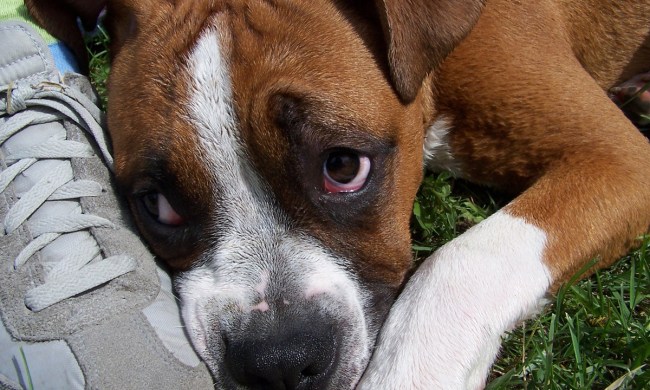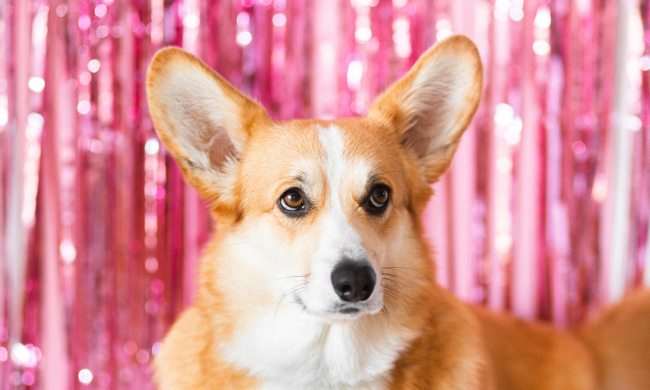The following dog breeds with blue eyes have striking appearances, and they can all be the perfect match for different types of families. But if you’re thinking of adopting a dog, it’s important to look past the blue eyes. Instead, consider the dog’s temperament, energy level, and other important traits. Understanding each dog’s care needs can help you make the best choice for your family — and chances are you can still find a dog with blue eyes who’s just perfect for your home.
Siberian husky
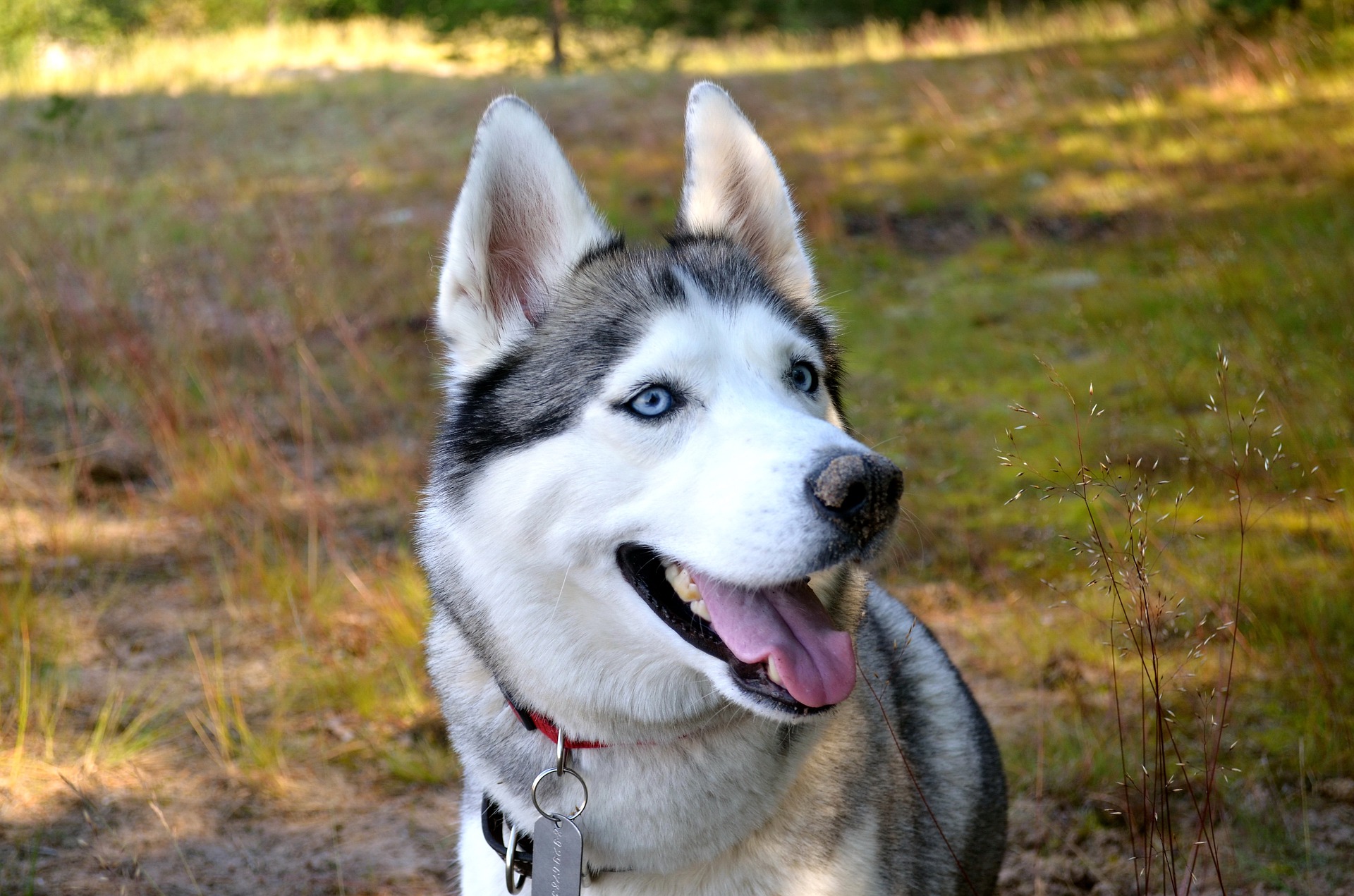
Known for their stunning blue eyes, Siberian huskies can make loyal companions, but these dogs aren’t right for every family. Huskies are larger, weighing between 35 and 60 pounds, and they’re highly energetic, so they need to be carefully watched in homes with small children. They have a thick double coat, so be prepared to deal with plenty of shedding hair if you adopt a husky.
Huskies were originally bred to work as sled dogs, and their status as a working dog is evident in their high energy and instinctive need to chase smaller animals. A husky needs plenty of exercise, and a fenced-in yard is ideal, especially given this breed’s tendency to chase things.
While huskies need to be in a situation where their activity needs are met, they’re also highly intelligent and social dogs that can be a great choice for a dedicated owner who’s willing to invest some time in training.
Border collie
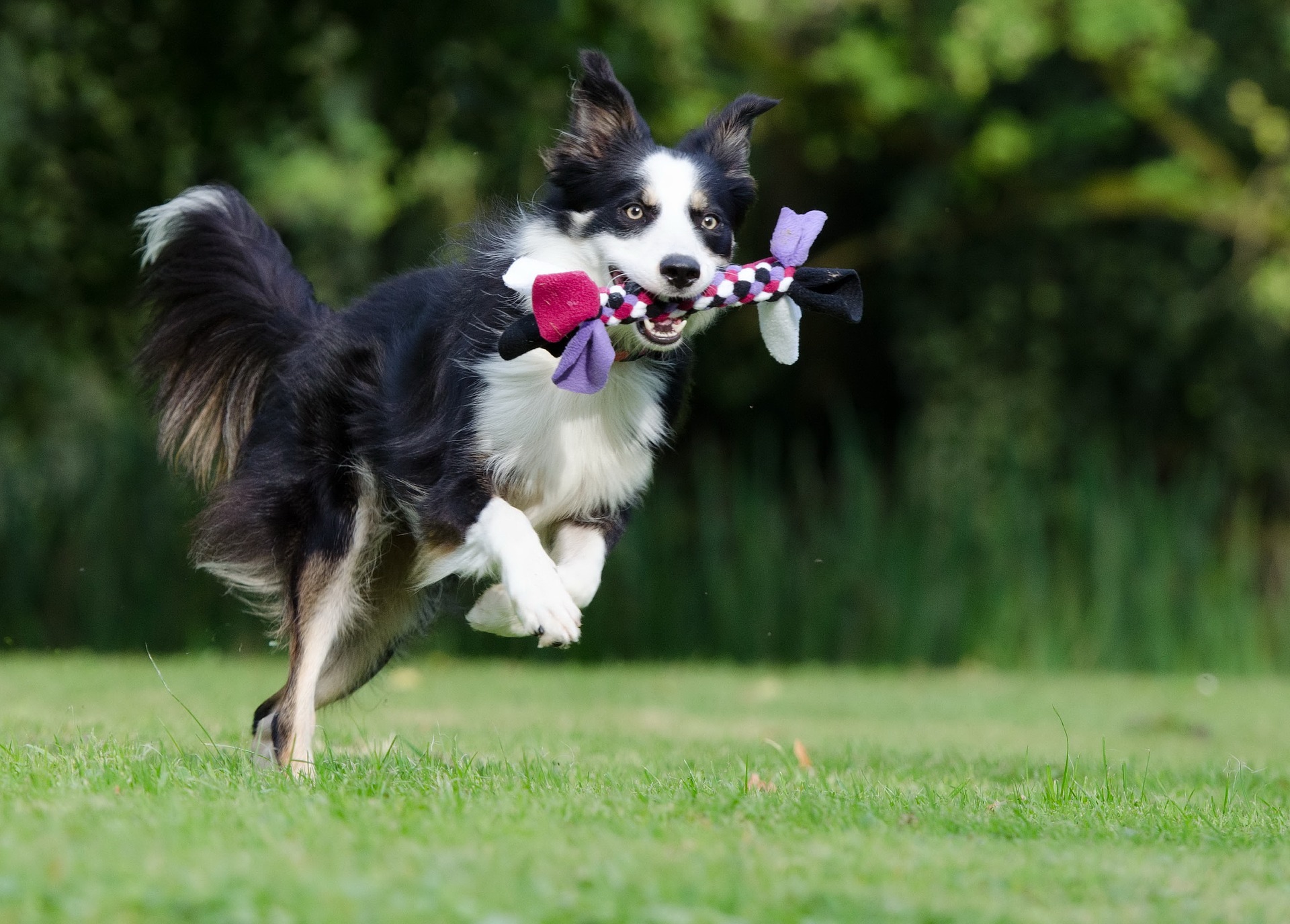
Border collies carry the blue-eye gene, and they’re one of the most energetic dog breeds you’ll encounter. Bred to herd livestock, border collies can run and play for hours. Because of their herding instinct, puppies and young dogs may try to herd their human family members until they are trained not to.
While border collies are highly energetic, they’re also highly intelligent and trainable. They’re also social and form strong connections with their families. Although these dogs can be good family pets, they need families who understand their energy levels and who will ensure plenty of walks, runs, and playtime every day. A fenced-in yard can help with this, and the border collie is a naturally popular choice among families who live on farms and in rural areas with plenty of space for the dogs to run.
Dachshund
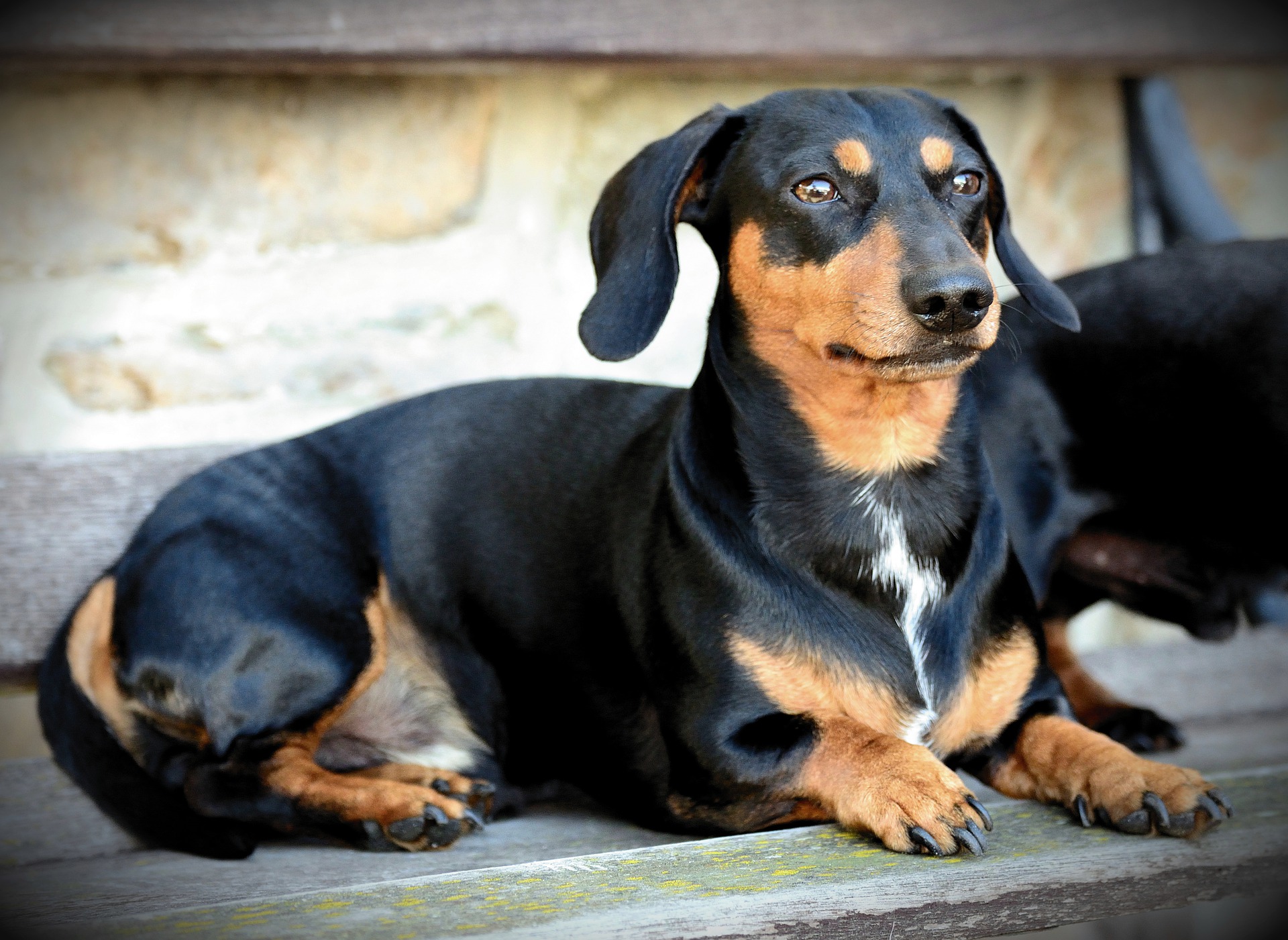
On occasion, dachshunds can have blue eyes, which is particularly common in merle-coated dogs. Thanks to the dachshund’s small stature, this breed is a good choice for families living in smaller homes and apartments. Dachshunds also don’t require the same longer-distance walks that some larger, more energetic breeds need.
It’s important to understand that the dachshund can be stubborn and feisty, and any owner will need to put some time into training a new dog. This breed is also cuddly and affectionate, and weighing between 15 and 30 pounds, it’s an ideal lapdog.
Australian cattle dog
As with dachshunds, AKC standards for the Australian cattle dog call for dark eyes, but that doesn’t mean this working breed is any less adorable with baby blues.
Australian cattle dogs are best suited to sprawling suburban yards — or, better yet, country life. Bred for herding cattle, Aussies require freedom to roam or at least a few hours of daily activity. Despite their high intelligence, Australian cattle dogs are incredibly stubborn, making them difficult to train unless you start early. They also have a strong prey drive, so they’re not necessarily the best fit for households with cats or small dogs unless they’ve been properly trained.
Australian shepherd
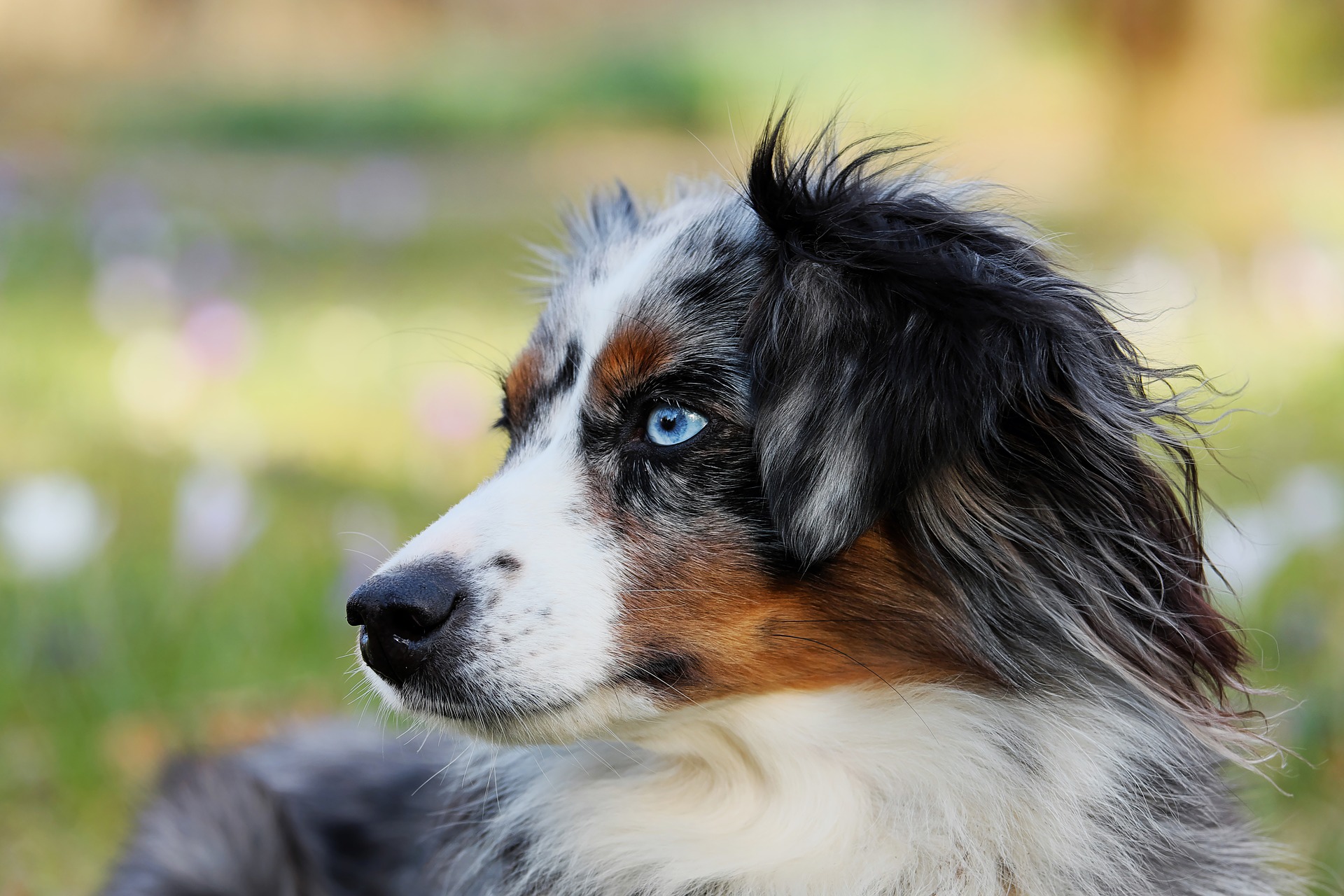
Many Australian shepherds have blue eyes, and that eye coloring occurs across multiple coat colors. Like border collies, Australian shepherds were bred to herd livestock, and their high energy levels reflect that trait. This working breed needs to get plenty of daily exercise, or they can channel that excess energy into negative behaviors.
Aussies can do well in house or apartment living, as long as they receive the mental stimulation and physical activity they need. They’re highly intelligent and trainable, and training is important when teaching them not to use their herding instinct on your human family members or on other pets. These dogs are most ideal for active families who can invest time in daily exercise.
Pit bull
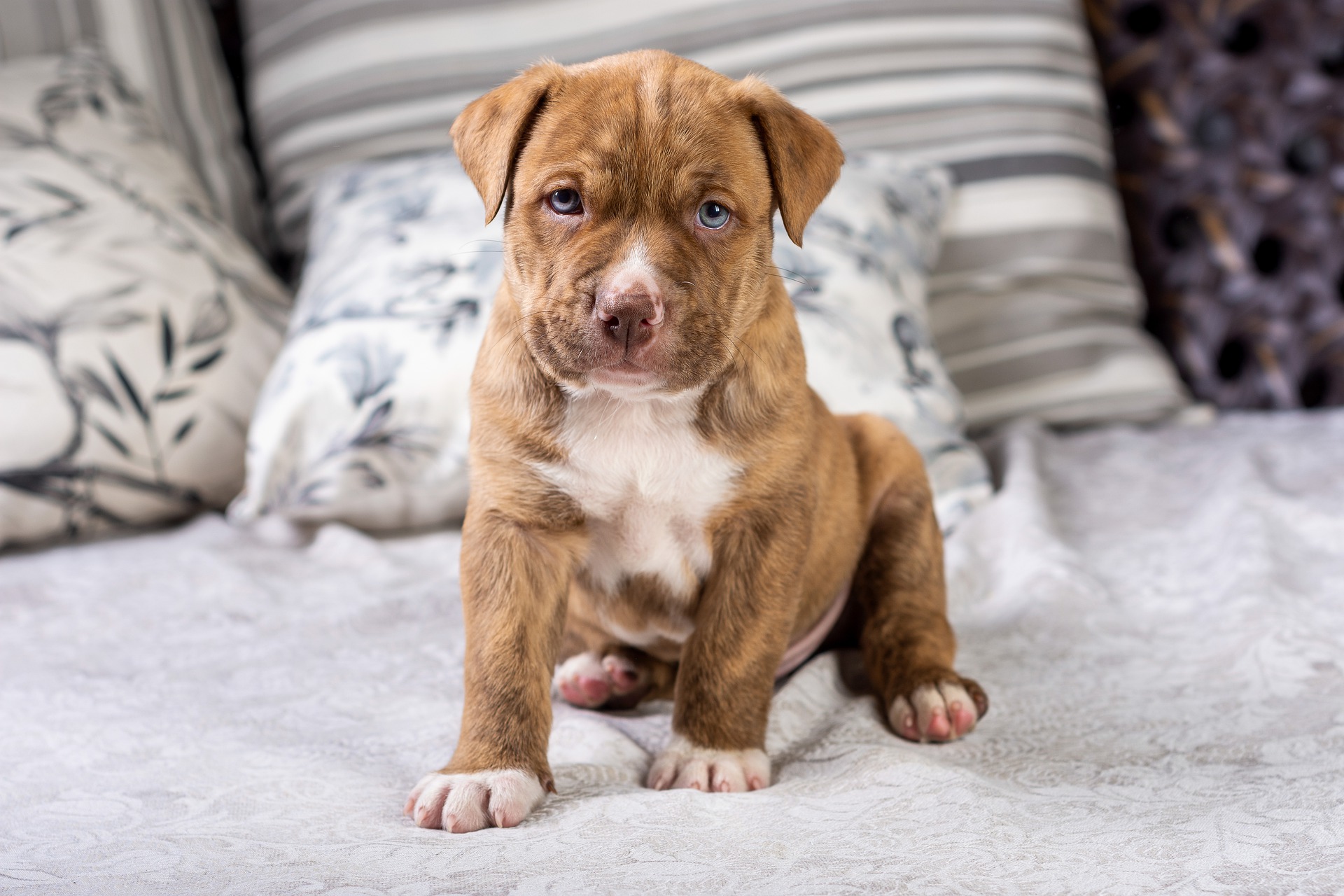
Some light-coated pit bulls have blue eyes, and it’s particularly likely that you’ll find this breed in animal shelters. Pit bulls have earned a bad reputation because of some pit bull attacks, but it’s important to remember that training plays an important role in how a dog will behave.
The American pit bull terrier was originally bred to fight, but many of these dogs are people-loving, affectionate types today. Pit bulls tend to be highly receptive to training, and they don’t have the high energy levels that some of the working dogs are known for.
Cocker spaniel
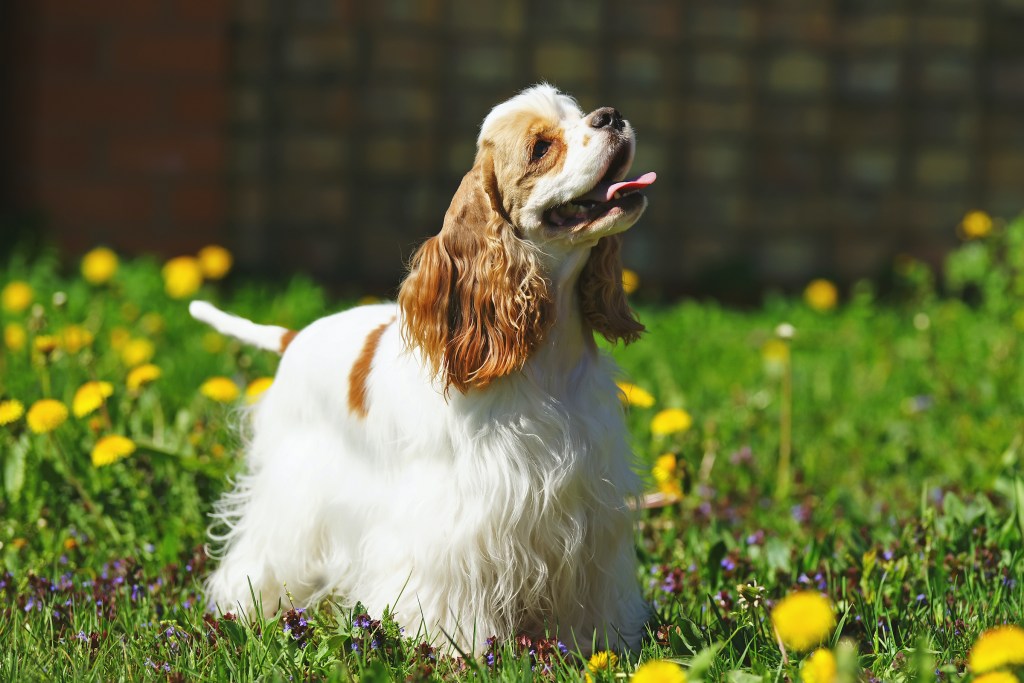
Sadly, aspiring show dogs with blue eyes don’t meet AKC breed standards, but they aren’t unheard of in cocker spaniels. One of the most popular breeds in the United States, cockers are the smallest sporting dogs, but they’re equally at home on your lap.
Cockers have bright, cheerful dispositions, and their instinctive need to please makes them excellent members of any household. These good-natured pups are easy to train and get along well with older children, but they may turn rambunctious around babies and toddlers unless they’ve been properly socialized from a young age.
Why do some dogs have blue eyes?
Just like in humans, blue eyes in dogs stem from a lack of melanin in the iris. Fun fact: Blue eyes actually aren’t blue. The color we see is the result of scattered light reflected back out. So, what causes blue eyes in dogs? As it turns out, there are a couple of possibilities.
- Albinism: Albinism is a complete absence of melanin in the fur, skin, and eyes, so albino puppers always have blue eyes. Their skin tends to have a pink tint, especially around the eyes.
- Genetics: Did you inherit your mom’s red hair or your dad’s nose? Dogs inherit physical traits from their bloodline, too, which is why so many huskies tend to have blue or particolored eyes. The merle gene impacts your dog’s fur as well as her eyes, resulting in adorable, multicolored patterns. Dogs with the merle gene are frequently blue or parti-eyed.
For the most part, blue-eyed breeds owe their stunning irises to a quirk of genetics. However, if your formerly brown-eyed dog’s eyes turn blue, head to the vet. It could be a sign of glaucoma or cataracts.
Adopting the right dog
These blue-eyed dog breeds are beautiful and captivating, but when adopting, don’t base your decision only on a dog’s appearance. Instead, consider how that dog’s temperament and care needs will work with your family and lifestyle. Consider how much time you can dedicate to training your dog each day, and then figure out how often you would like to commit to exercising him or her. Consider any constraints that your living situation (like a small apartment) places on your choice of dog, and what type of dog temperament would best fit in with your family.
When adopting a dog, spend plenty of time researching the breed and talking with shelter staff about that individual dog’s temperament, training, and background. Working with a professional dog trainer can also help your whole family and your new dog learn how to live peacefully with each other.
